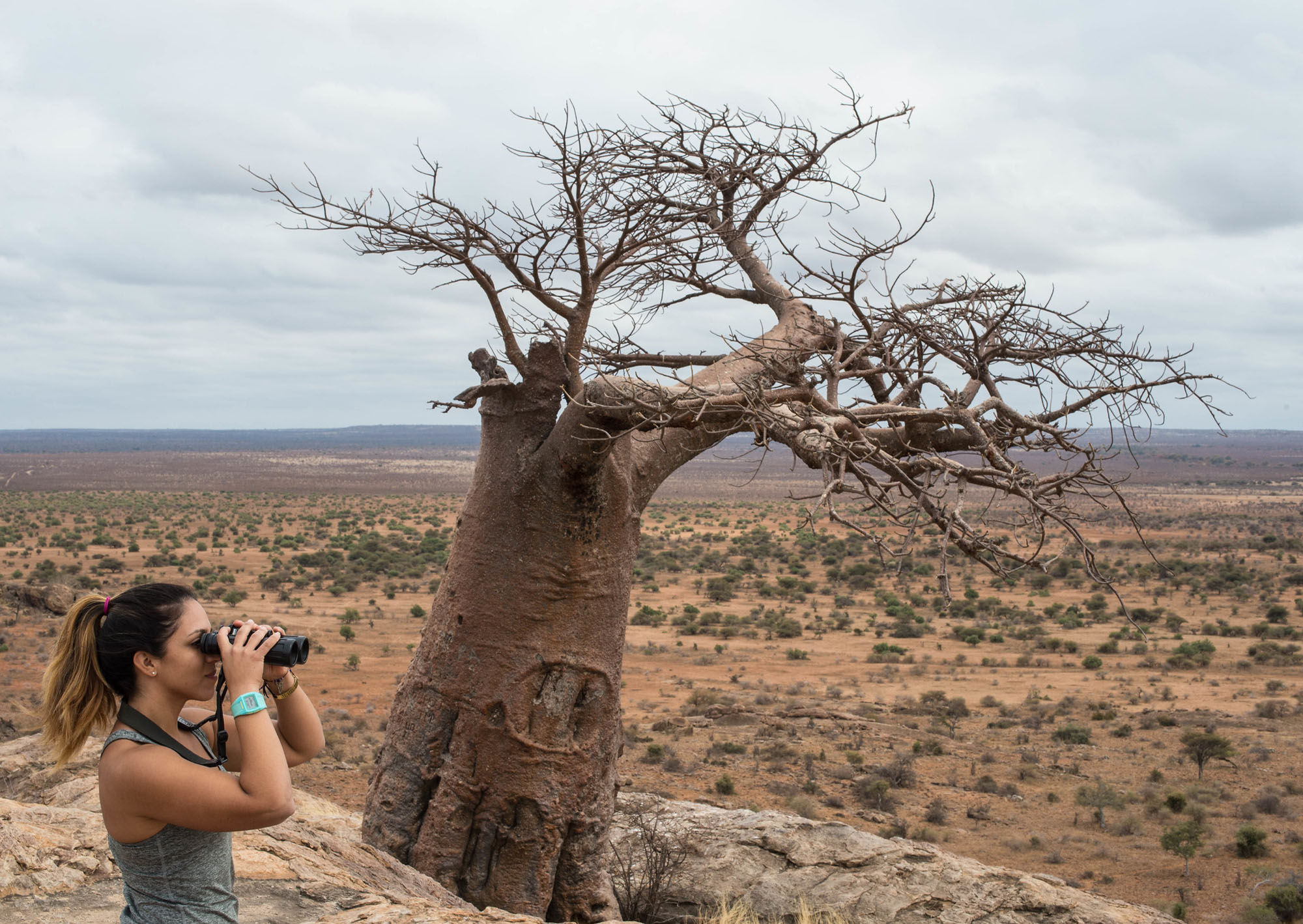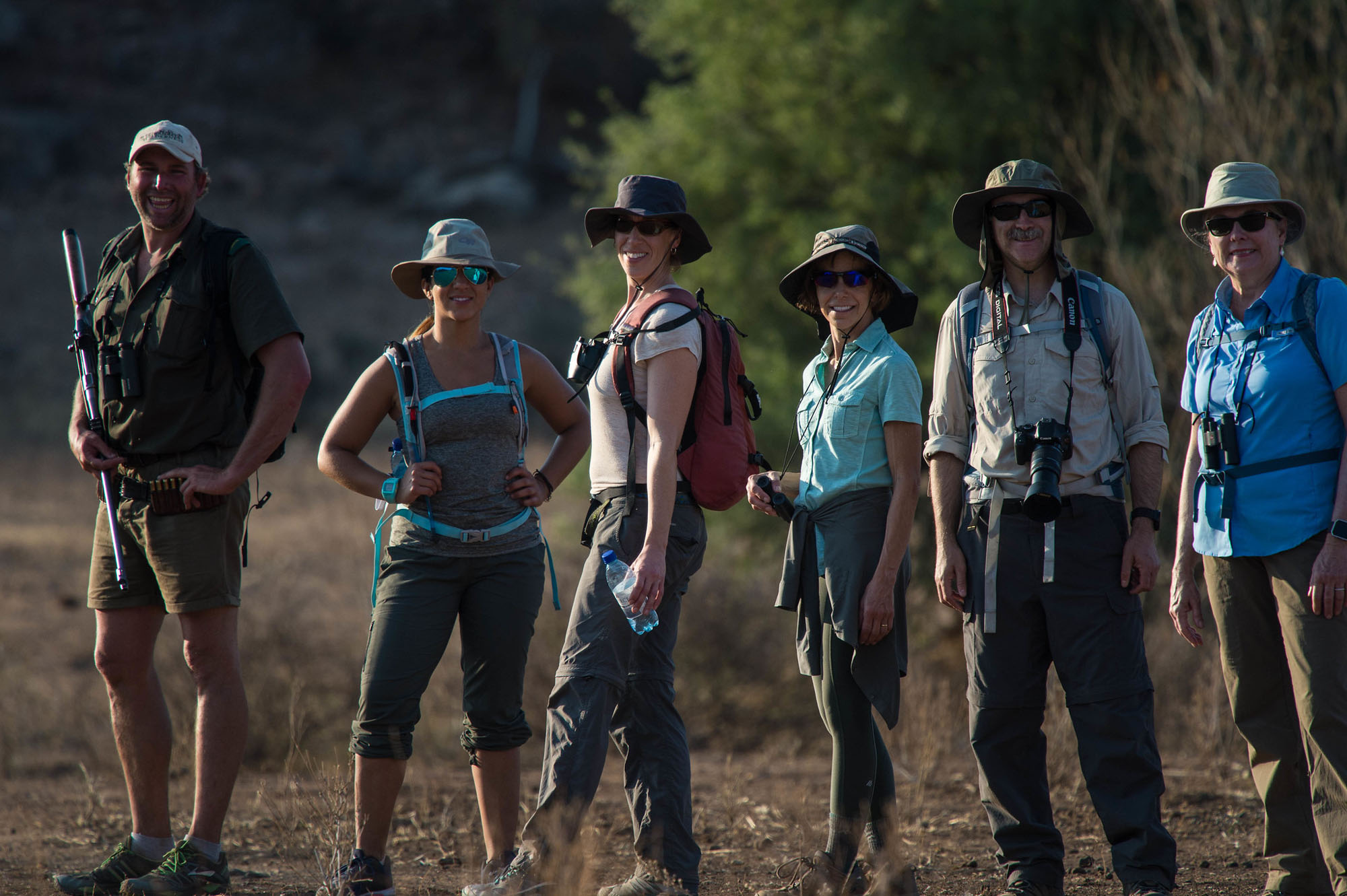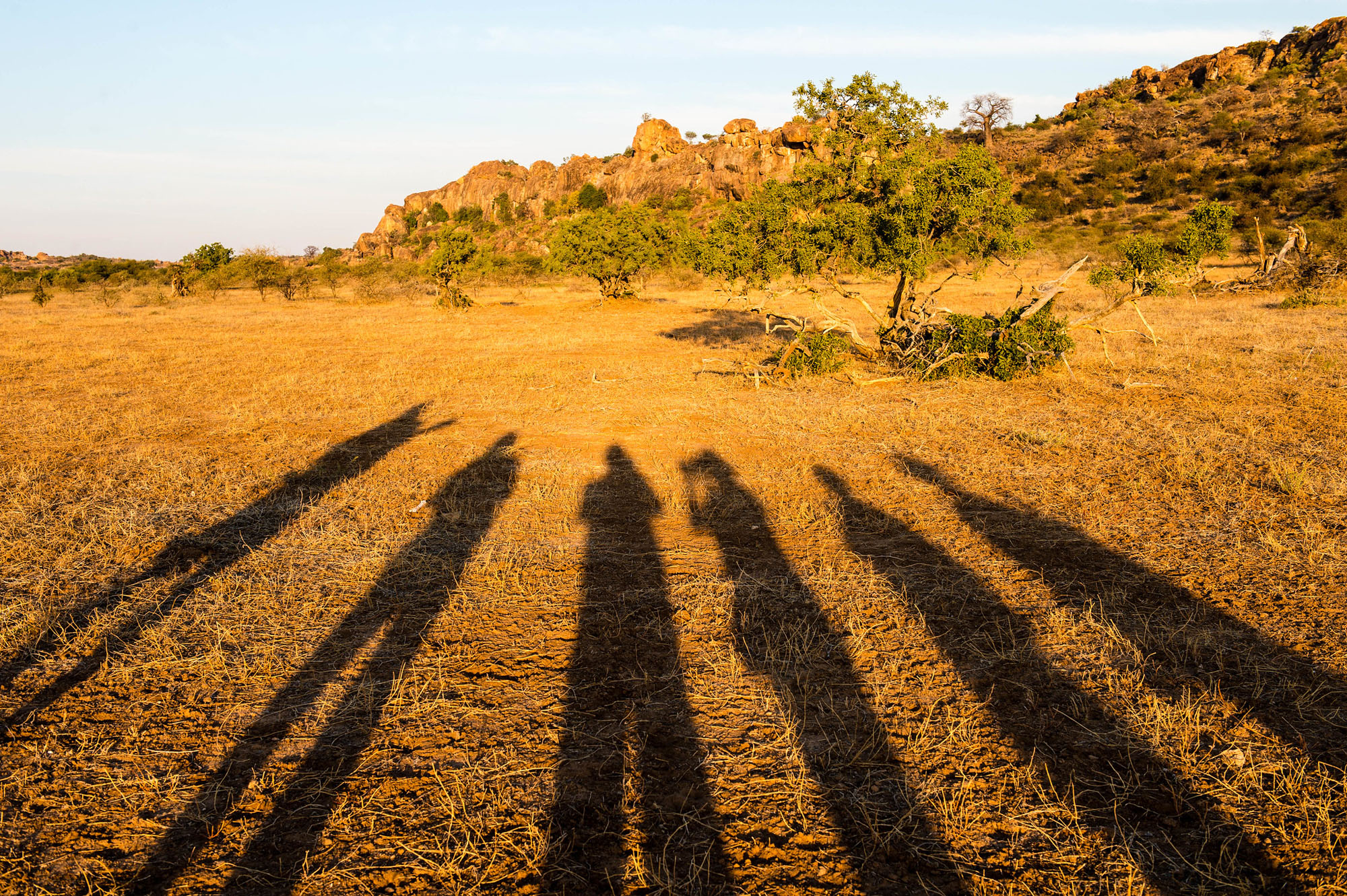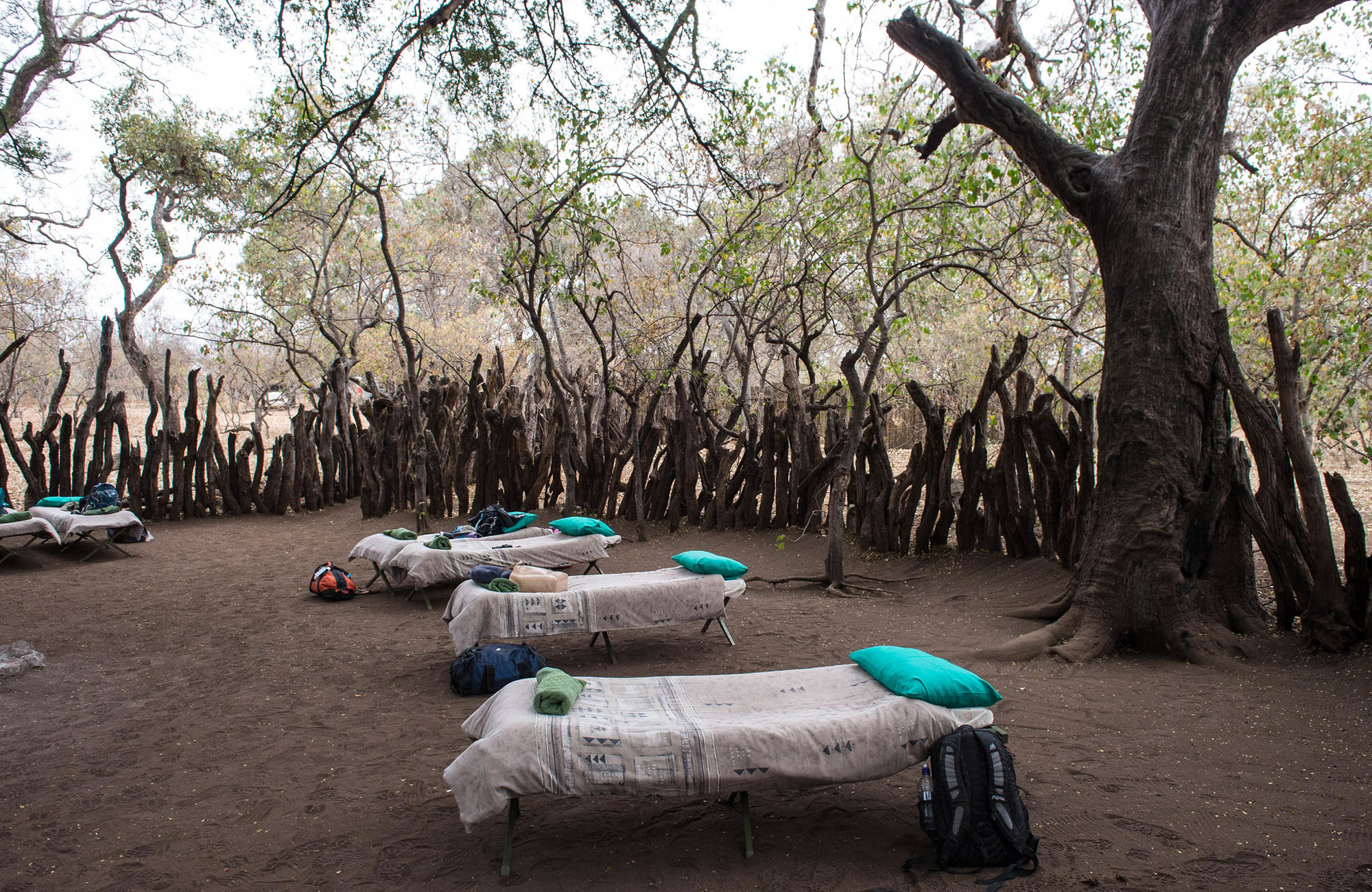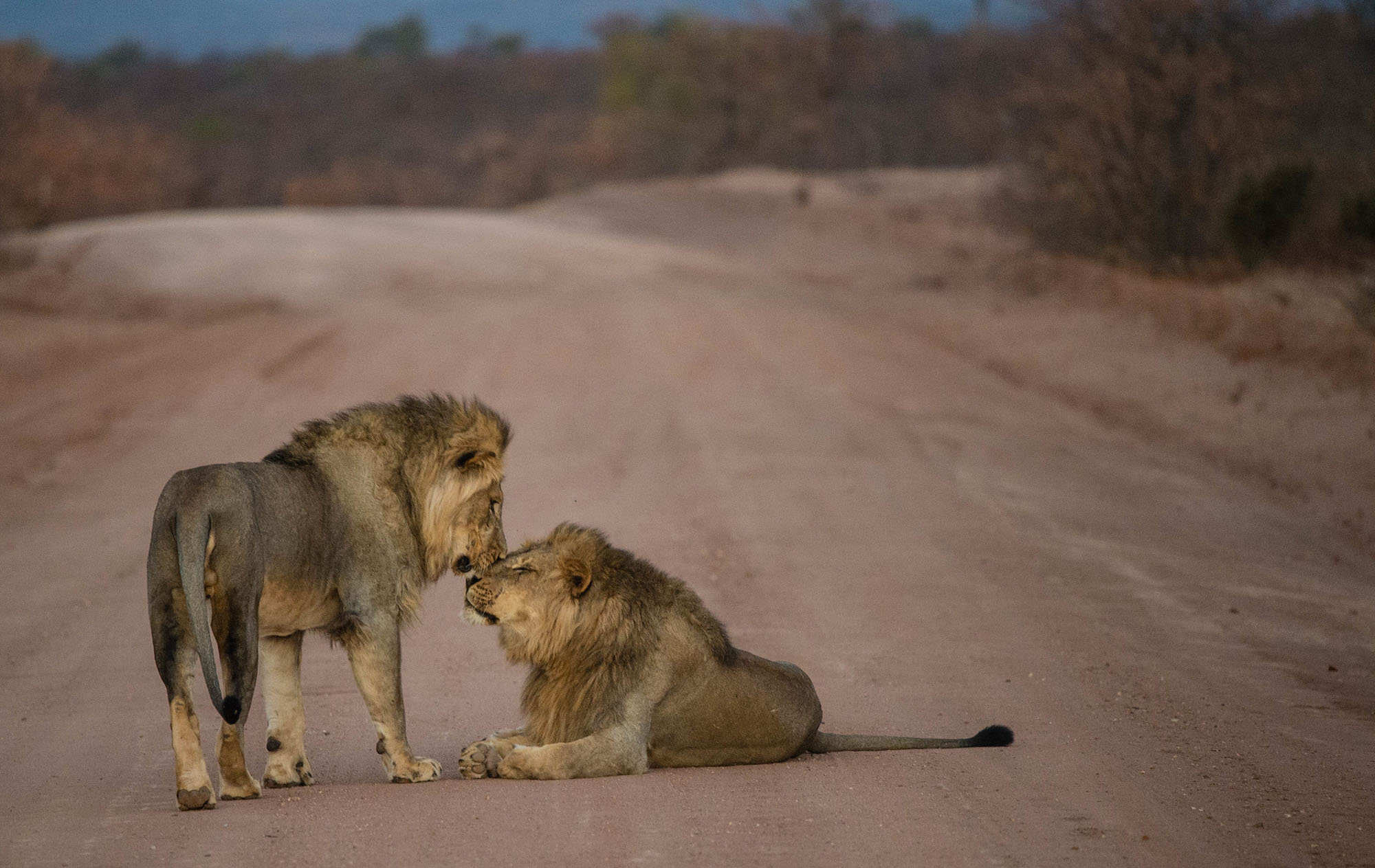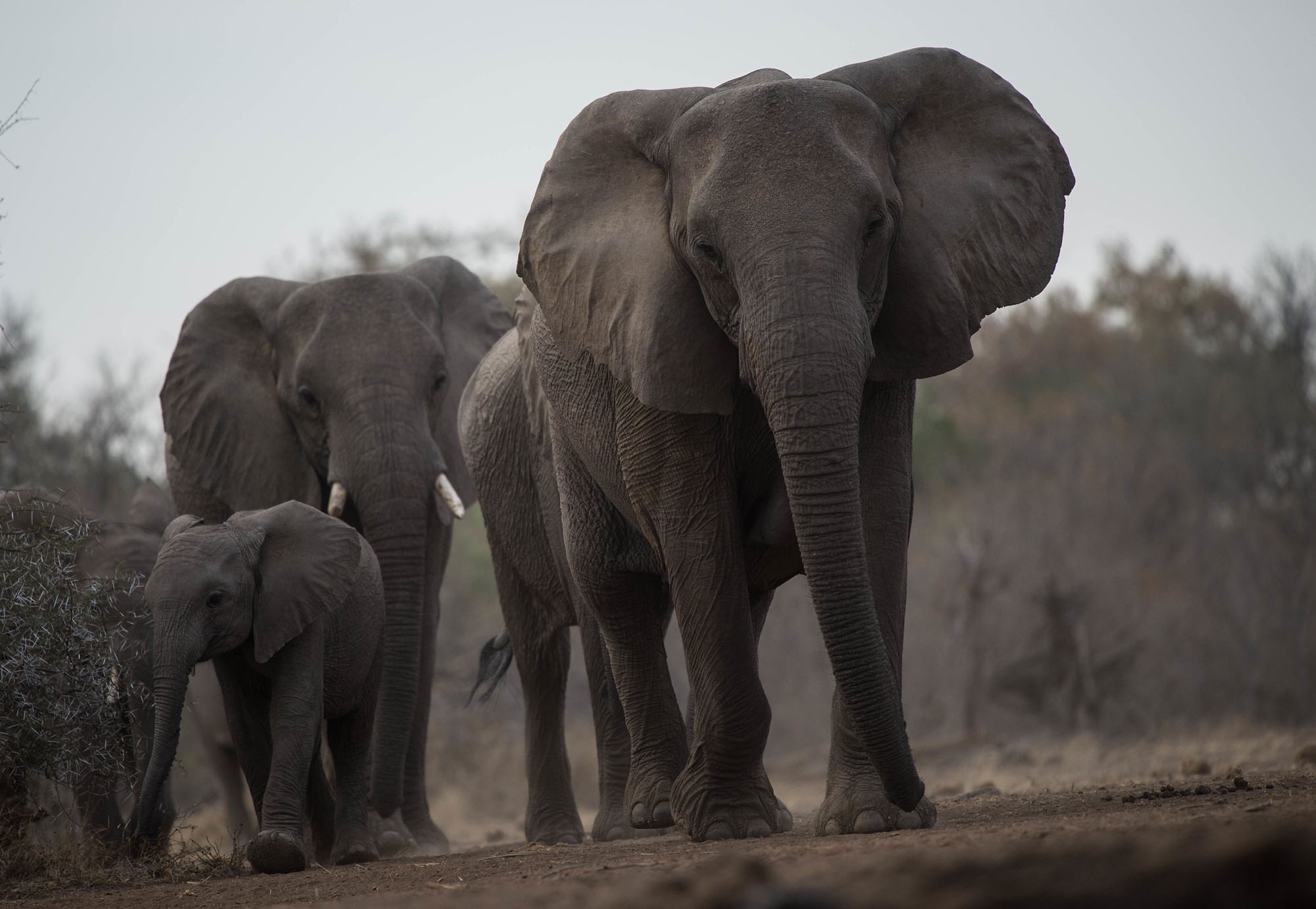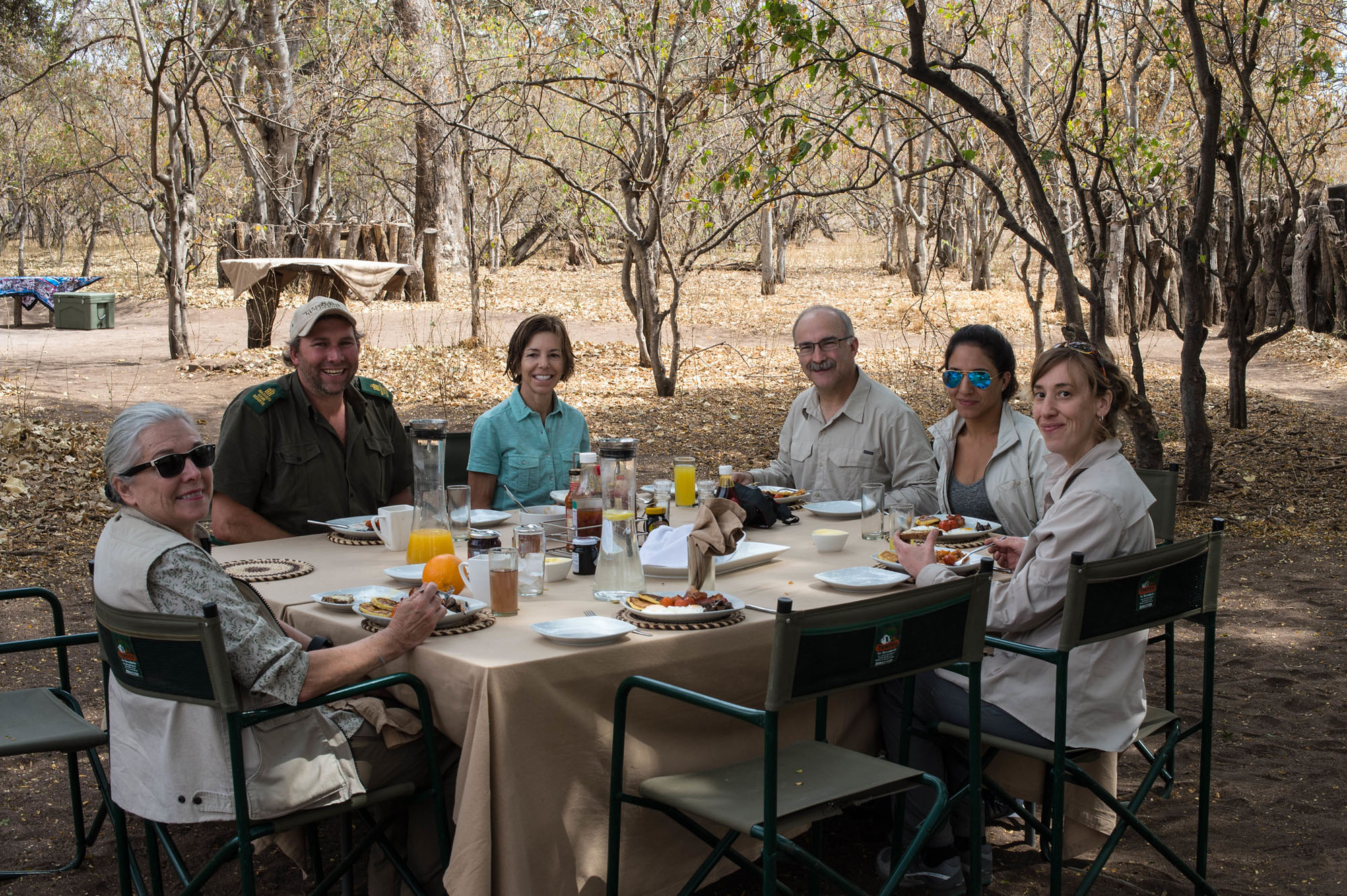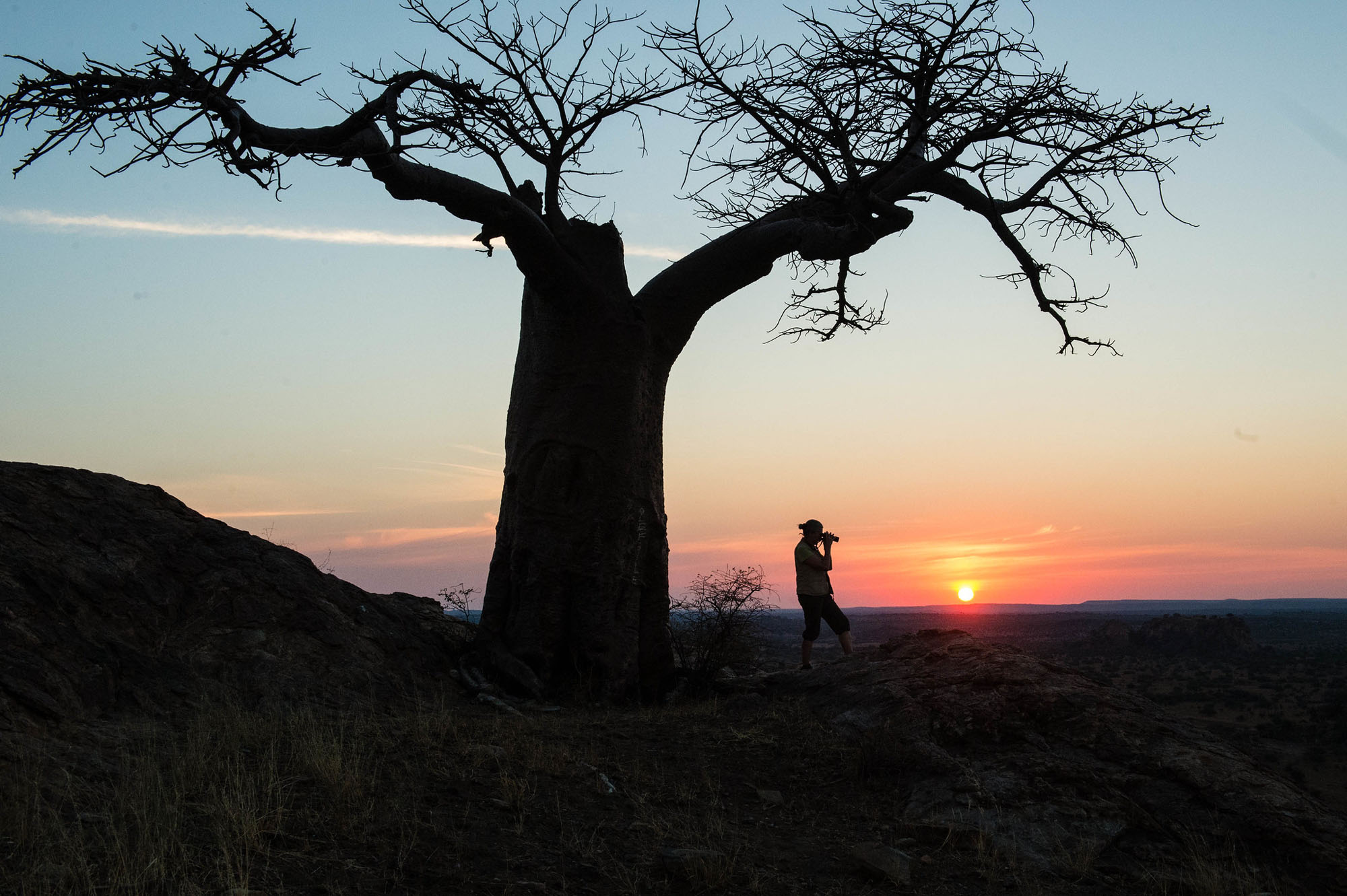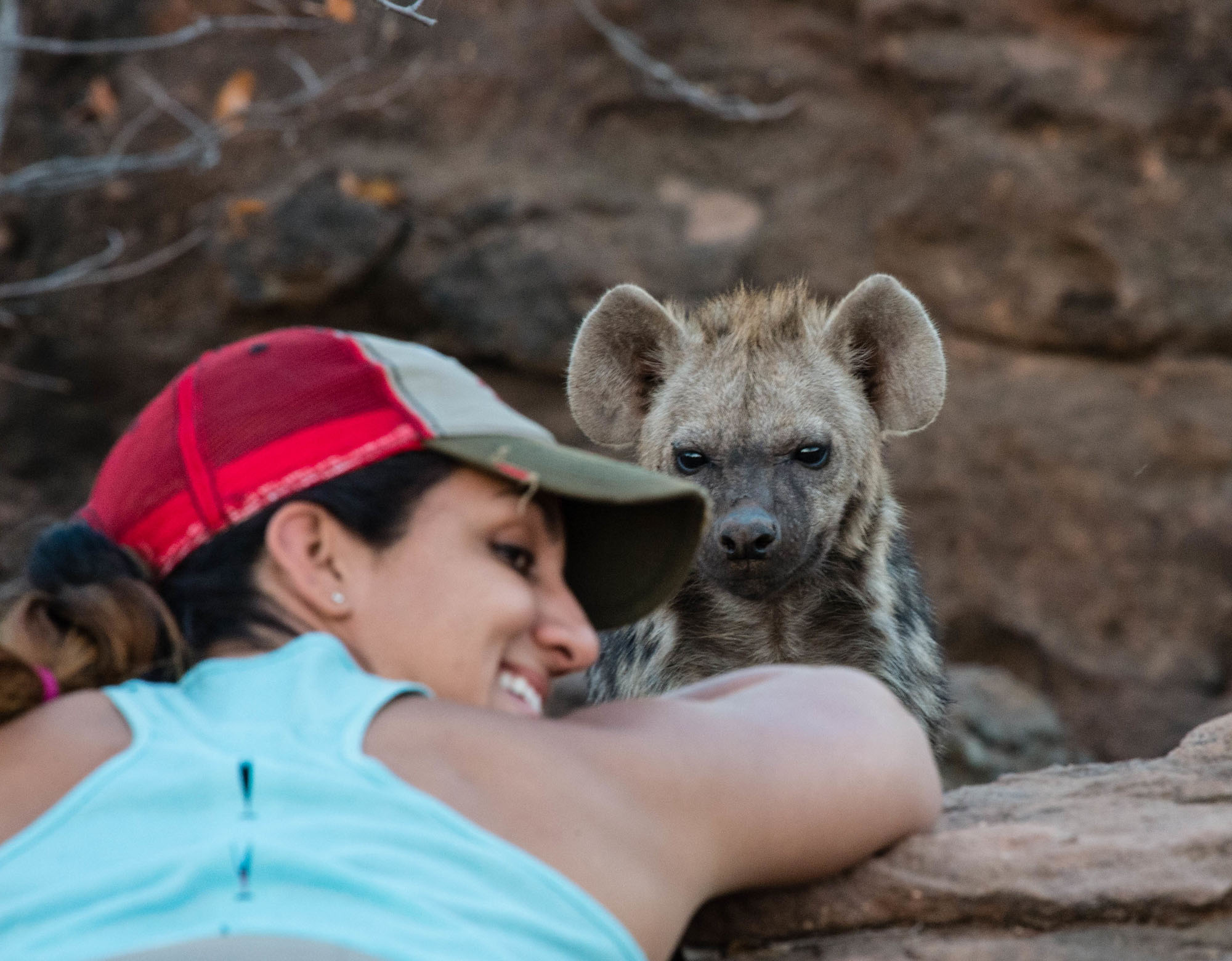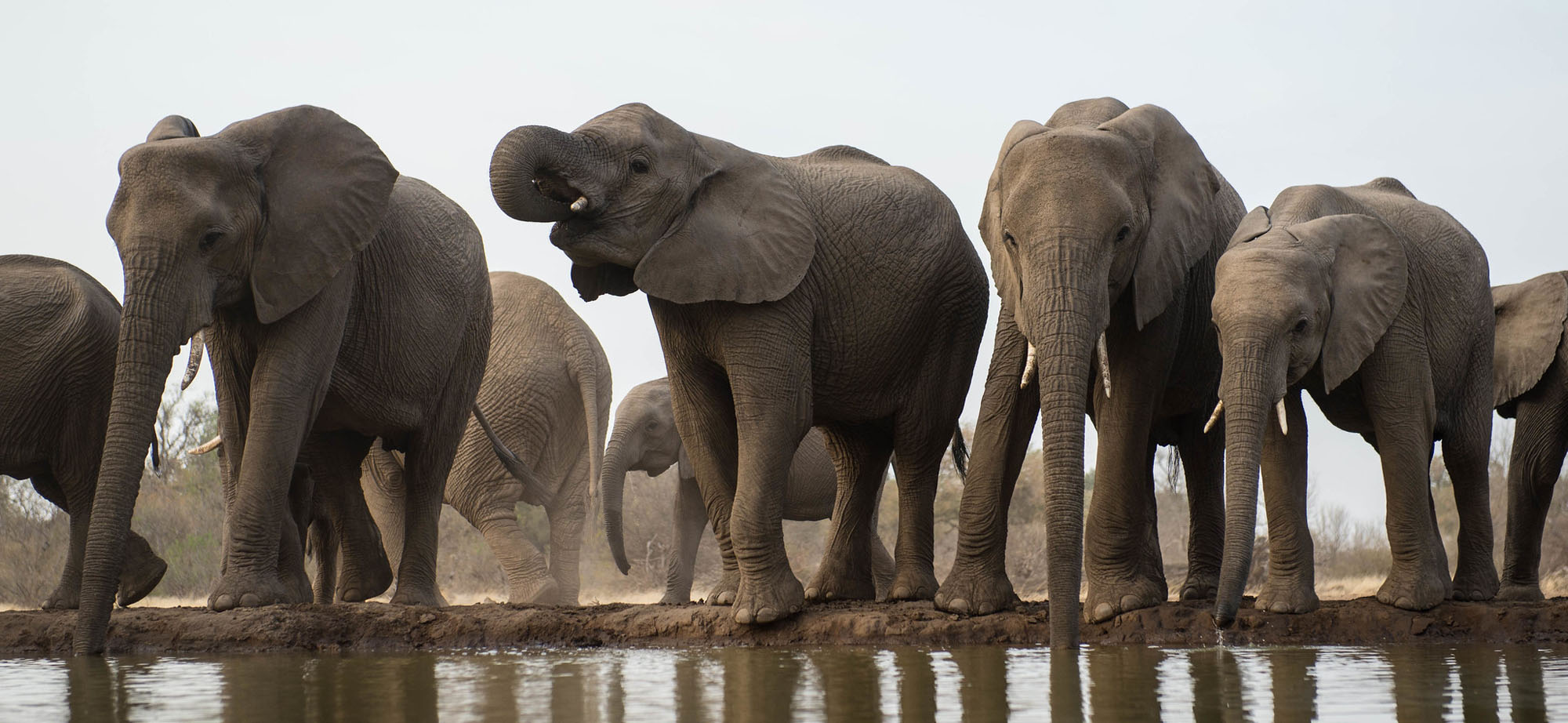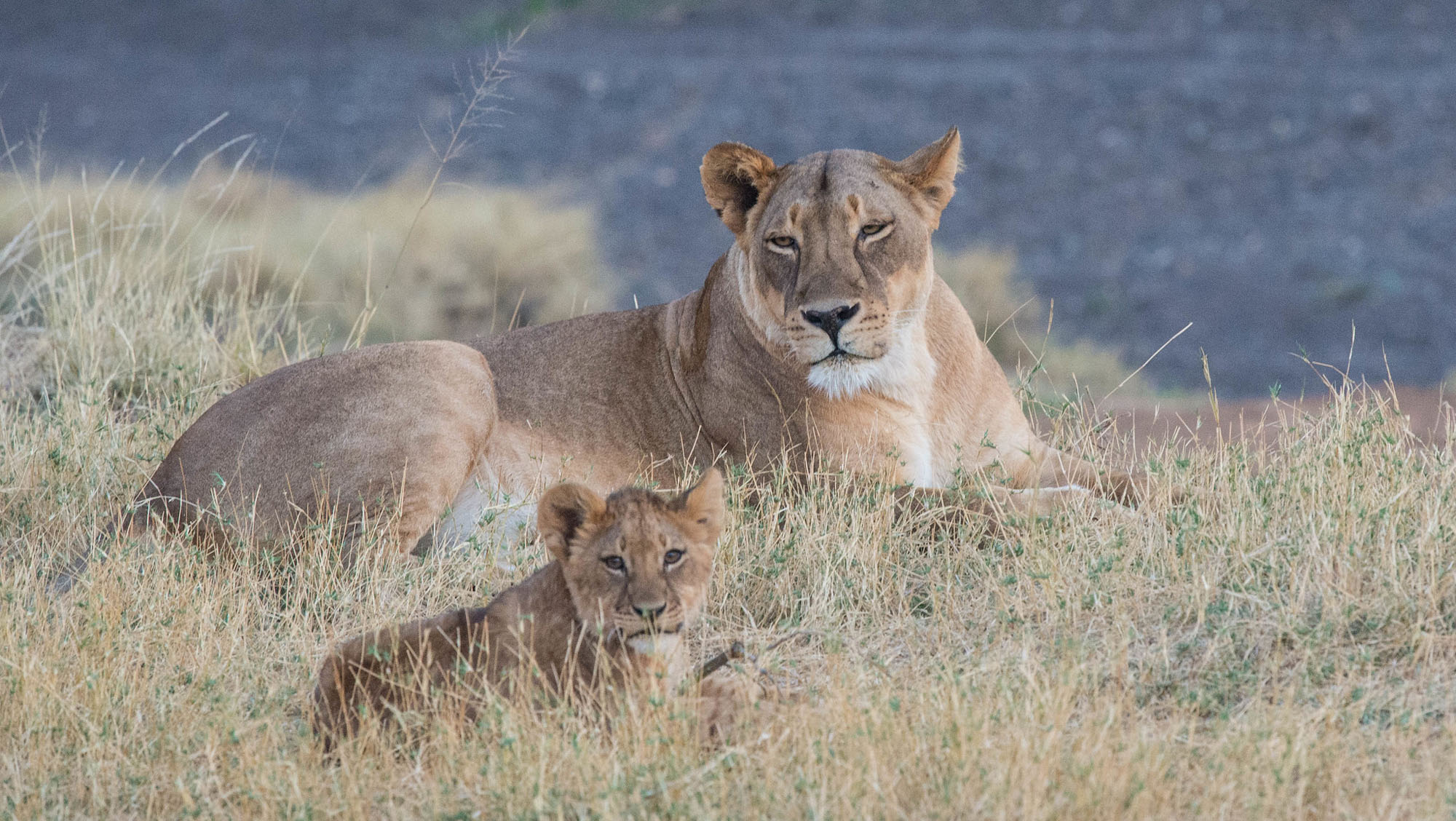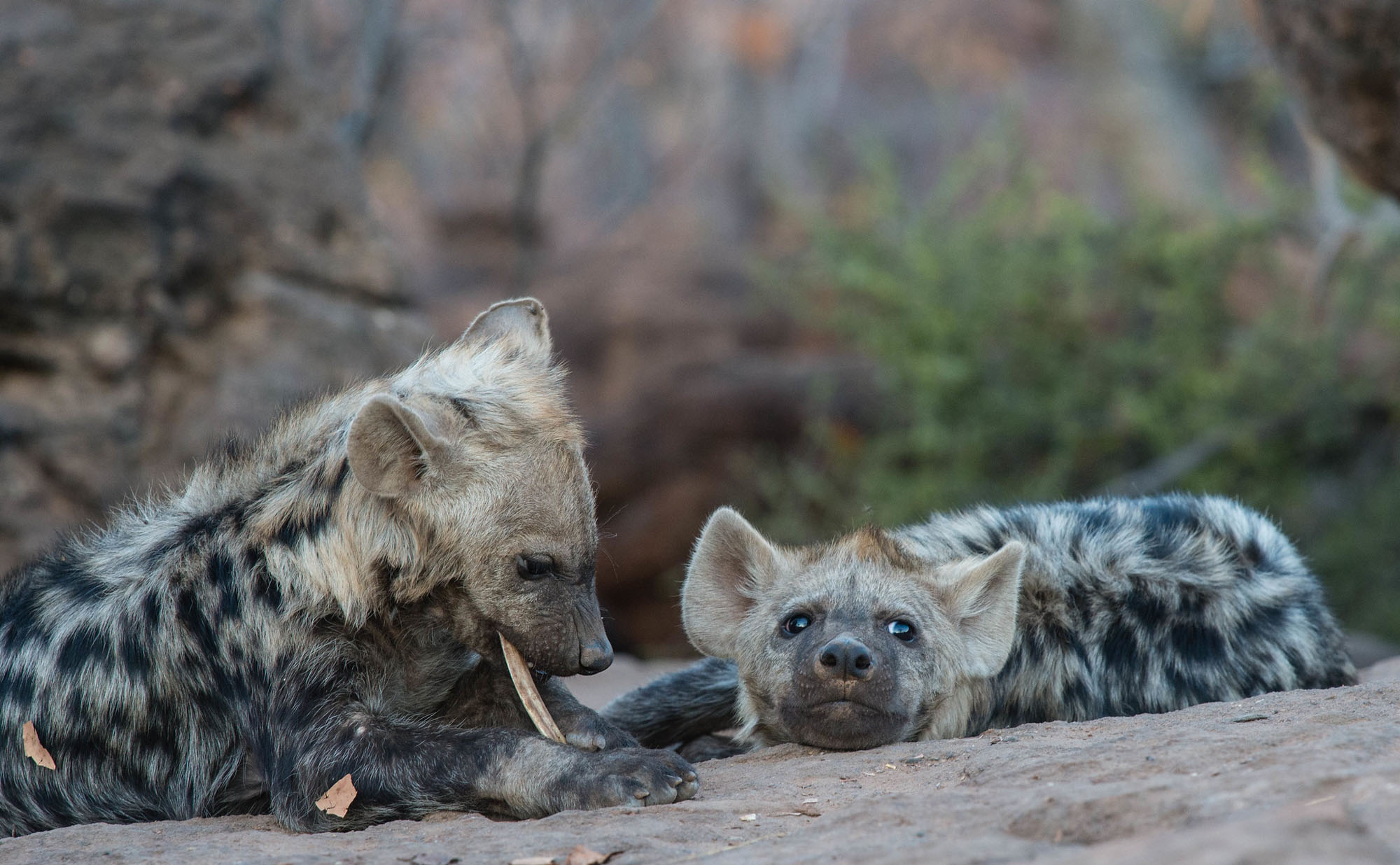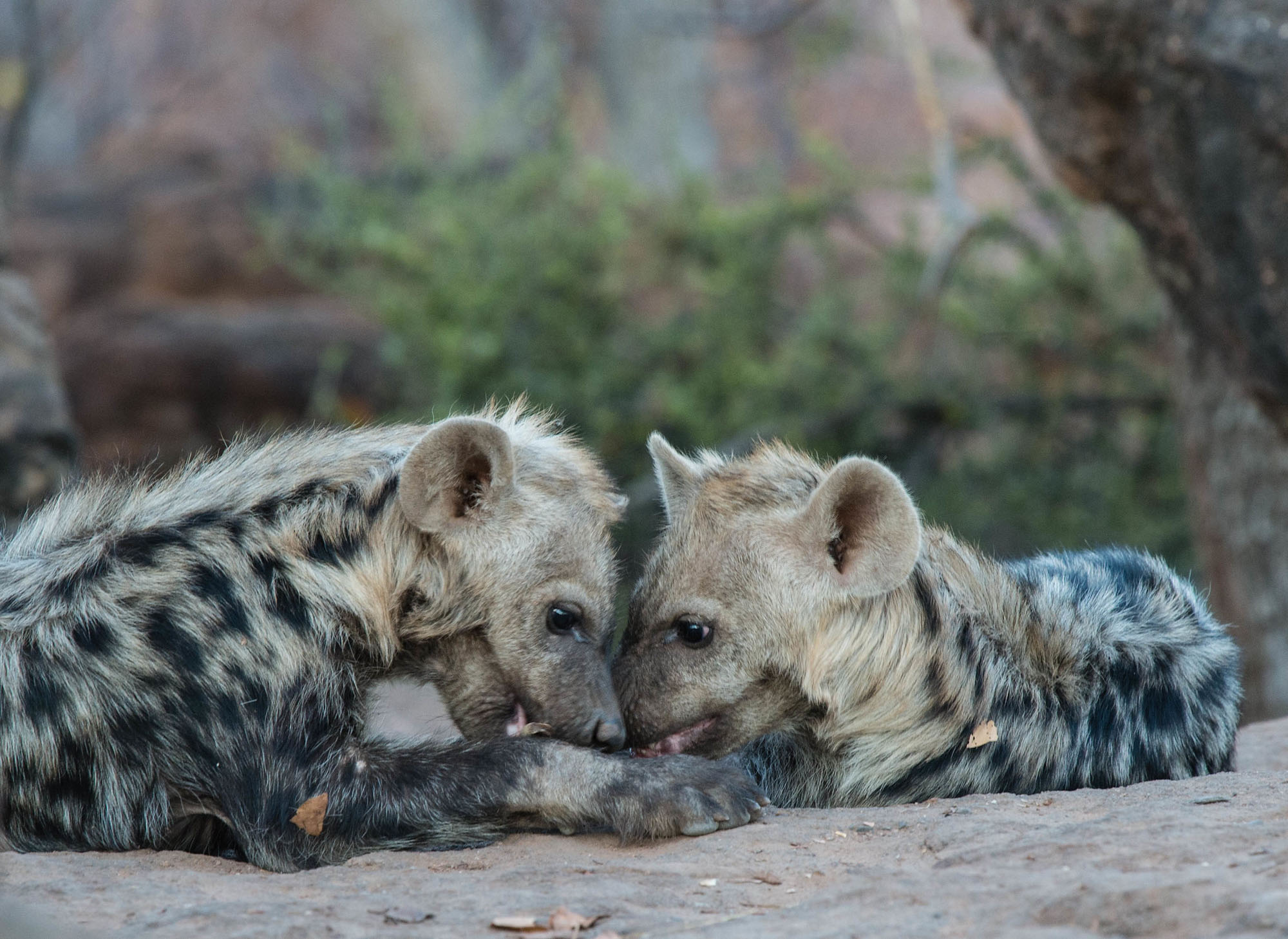The WalkMashatu Foot Safari, Botswana
The WalkMashatu Foot Safari, Botswana
As one part of a multifaceted trip which also includes game drives and some water experiences such as boating or canoeing, a foot safari is for many the purest form of experiencing the African wilderness. Free of the noise and intrusive impact of a vehicle and free to go just about anywhere, a walking safari is open-ended and unpredictable. It is as close as one can get to the wilderness on many levels: feeling the ground under your feet, touching the surrounding vegetation and listening for sounds while observing signs and tracks. Being out of the vehicle adds a sense of vulnerability which is exciting and at times challenging. Of course, you are quite safe in the presence of a careful, experienced, armed guide yet the possibility of an unplanned, unforeseen encounter is always hanging in the air.
For our guests visiting Southern Africa, we recommend walking safaris in Zimbabwe (Hwange National Park), South Africa (Kruger National Park) and in the Tuli Wilderness area of south-eastern Botswana. Having experienced the bush on foot in these and several other areas over the years, we put the 3-night WalkMashatu safari with specialist walking guide Stuart Quinn, at #1 on our list. Stuart’s enthusiasm and passion for the Tuli area and all of its beauty and wildlife become evident from the moment you first meet him. An affable, lanky professional guide with an encyclopedic knowledge of the Tuli Wilderness, Stuart imparts knowledge in a low-key, yet highly effective manner. Stuart’s infectious laugh and great sense of humor make him a fun person to be around. We’ve done two foot safaris ourselves, with Stuart in charge, and will be returning to the Tuli Wilderness in November, for an update on conditions and facilities.
A foot safari always starts with the ground rules: walk in single file, take turns to walk in front just behind Stuart and keep the volume down. Follow the head guide’s instructions at all times. Most importantly – in the event of something untoward happening – don’t run! The overall objective of a foot safari is to experience nature in its totality. You would not be simply driving through it in a loud, intrusive vehicle.
Over the course of two different outings with Stuart, there’s been many highlights, some of which are the following:
Sleepout at the Kgotla & Creeping up on Elephants
For many of our guests, the sleepout at the Kgotla is the high point of their entire Botswana trip. We can understand why, having done this on our very first night on our very first visit to the area. From the border post, it was about a 40-minute drive in an open 4-wheel drive vehicle to the overnight site, a circular open-air enclosure – the Kgotla. En route we observed giraffes, kudu, impala, and elephants. We knew that the six of us together with Stuart and his wife Julie would spend the night sleeping out. We just didn’t know quite where and how.
Our questions were soon answered and our fears allayed, once we arrived at the Kgotla. Previously a communal meeting place, the Kgotla is open to the sky but safe and secure for guests, with an impenetrable ‘wall’ of solid tree stumps keeping out unwanted visitors. It made for a fun and totally novel experience to have a communal sleep out in such a quiet, peaceful spot with nobody else around. It’s the bush, so naturally there was a campfire. Slowly moving our camp chairs closer to the red-hot coals as the day’s warmth dissipated, it turned into a perfect night on safari. With the flickering flames setting the scene, there was plenty of good conversation over a tasty, wholesome, ‘home-cooked’ meal, with a couple of glasses of nice wine. Soon enough, we were all ready to retire to our small cots, spread out in a circle around an open fire, under a massive mashatu tree. In a light breeze with the cool air gently blowing across our faces, we fell asleep as peacefully and naturally as is humanly possible. Sleeping in the open with nothing but the Botswana sky and stars above was exhilarating then, and lives on in our minds as a small jewel in our collection of memories.
Not even the sound of a passing aircraft disturbed the natural rhythm. Not that it was always quiet. Sometimes strident bird calls and other noises were enough to keep one guessing. Kathy had been somewhat ambivalent about this ‘sleeping outside’ business but in the end she was the biggest convert. She slept so soundly that she totally missed two lions roaring nearby, very early the next morning. The Kgotla has ‘his and hers’ showers and toilets which can be safely reached at any time.
The following day we hiked to the Motloutse River where we saw about 30 to 40 elephants drinking and mud-bathing. Soon enough they were joined by first one, then another and yet another herd walking out of the bush on the other side of a very wide expanse of sandy gravel, making up the river-bed. Crouched down so as not to break the sky-line too much and alert them to our presence, we crept closer for some great views of these imposing beasts. As always, it was endlessly entertaining to watch their interaction and particularly to observe their dominance displays.
By the time yet another herd approached the scene and started moving towards our right (the others were in front of us and to our left), Stuart wisely decided that it would be safer to move away from the river, just in case we got surrounded by elephants. Which would not nearly be as much fun as just observing them from a safe position.
We cut through a marshy (yet dry at the time) area with lots of elephant foot holes, through a very thick patch of bush and then on to the Mmamagwa Ruins and Rhodes’ Baobab, which we reached just as the sun was setting. The views over the valley, with the sun setting right in front of us, were superb. A tiny rock elephant shrew entertained us, scampering out from its rocky shelter right to our feet, quite unafraid of our presence. We had worked quite hard getting up the slopes and enjoyed a well-earned sundowner drink and some salty snacks there before we made our way back to camp, this time by vehicle.
Mohave Bush Camp & Eagle Rock
Mohave is a tiny bush camp with just three basic bungalows next to each other and a thatched lounge and dining area as well as a small lapa overlooking a waterhole on the Mohave River. This is what safari is all about. Great atmosphere, quiet, remote and wild. True wilderness. Mohave is known for often having lions around – we heard some – as well as elephants.
Afternoon tea this day was special with koeksisters and seasoned ground beef empanadas. Just what the doctor ordered before we set off for Eagle Rock, a hike of about 90 minutes or so. We encountered a few patches of heavy going sand along the way, but mostly the walking was fairly easy over flat terrain.
The walk up to the top of Eagle Rock didn’t take much more than 10 to 15 minutes or so and can be done by almost anybody who is moderately fit and mobile. Eagle Rock is an impressive promontory with a near 360 degree view over parts of the Limpopo valley, with the Motloutse River in the foreground. Up top, we promptly saw a Verreaux (Black) Eagle take to the sky. Several of its favorite prey animals – dassies (also known as rock rabbits) – could be seen scampering away. From up there, we enjoyed great views over the surrounding countryside, the river and the distant hills. It was a beautiful sunset.
Along the way up and down, Stuart pointed out various interesting geological features. Much of the rock was sandstone, with very visible ‘globules’ to be seen. These were round knobby protrusions or holes, depending upon whether the matter which caused their formation was softer or harder than the surrounding rock. If softer, the globule would wear away faster, causing a round hole; if harder, it would take much longer to erode, resulting in one of the knobby protrusions.
From there we made our way to the next overnight stop but not before a most interesting encounter with the rarely seen brown hyena. Stuart had mentioned the presence of the animals in a particular spot – a large overhanging rock which formed a wide shallow cave of sorts. We crept up to the area through a narrow rock canyon, hoping to surprise one or more of the brown hyenas near their den. As it turned out, we did not surprise them: they had heard our approach and were lurking on the ‘exit’ side of the canyon. Kathy saw the brown hyena first as it bolted into its escape route, and Stuart and I also caught a glimpse of the dark shape as it slipped away.
As interesting as the sighting itself was the brown hyena clan’s boneyard. There were in excess of 40 to perhaps even 50 different bones – mostly skulls – lying around right in front of the shallow cave entrance. Most were impala horns with the top of the skull still attached, others were baboon skulls – even a much larger skull of a young elephant could be seen. The older ones were ivory white, while more recent scavenging finds such as a fairly fresh set of impala horns still had a pinkish tinge at its base, the animal having lost its life not very long ago at all.
During dinner that night a large elephant bull came to the water hole at Mohave around 9 p.m. It was a real ‘great grey ghost’ scenario and everybody loved watching the elephant drinking quietly and then slipping away into the darkness, almost soundlessly.
Stargazing is amazing here with an incredibly clear sky. Hanging over us as vividly as any of us had ever seen them were planets, stars, galaxies and the Milky Way. Dinner – under the stars of course – consisted of butternut squash soup, garlic bread, chicken fried steak and cheesecake for dessert. The food is home-cooked with no pretensions to be cutting-edge or fancy. It is wholesome, tasty and nobody goes hungry. We enjoyed a peaceful night.
Walking into Lions
Our mission one morning was to track and find some lions which we had heard calling the previous night from camp. Stuart picked up their tracks soon enough but as it turned out – unknown to us at the time – we had scared them away from where they were sleeping.
Later on, having picked up the tracks again, we could see where the lions had crossed right over our tracks in several spots. Which meant that they were close but also that they were alert to our presence.
This is what makes a walking safari such an interesting and ultimately fascinating experience. You can seek out predators by following their tracks – which is what we did – only to find out that they are better at that game than humans.
In the end the chase was almost just as good as the catch. In our mind’s eye we could see the lions bounding towards us in slow motion just like in a National Geographic documentary. Perhaps the imagined version of walking into lions – which is what we were trying to do – is better than the real McCoy. There’s always another time!
Serolo Tented Camp & the Hyena Den
For many WalkMashatu trailists, the last overnight stop on the trail is Serolo tented camp which was located on an elevated ridge above the floodplain, close to the then dry Limpopo River. There is a small waterhole just below the camp, a cozy lounge and dining room area and five en-suite tented units each with two three-quarter size beds, a separate shower and toilet and a powerful fan.
On the day we arrived there, we enjoyed afternoon tea with some vegetarian quiche and mini brownies. Then we set off on the afternoon activity, a drive along the Limpopo River, at the time reduced to a dry, sandy riverbed. A few kilometers further on we reached a rocky outcrop where we made our way to a hyena den site. Much to our surprise – and delight – there were four babies to be seen, a couple of which were really curious about our presence and came right up to us to get a whiff of our smell.
The light was perfect and I managed a few good captures of the hyenas acting out and staring at us.
They were awaiting the return of the adult hyenas who would be bringing them some food. Just then, we heard two lions calling each other. It sounded close and getting closer. Hot footing it back to our vehicle, we drove out to the nearby main road and less than 500 meters from where we had parked, we saw one and then another lion in the road. We sat and watched, pretty much spellbound as the two spectacular male lions walked towards each other. Through binoculars and from behind our camera lenses we watched as they performed a brief re-introduction ritual consisting of rubbing noses. Then they promptly flopped down for a snooze right in the gravel road. Happy and content we made our way back to Serolo camp for drinks and dinner.
Everybody agreed that it had been a very special day.
In next week’s blog we will talk about another kind of foot safari – a gorilla trek. How does a gorilla trek in Volcanoes National Park in Rwanda differ from a similar trek in Uganda’s Bwindi National Park? Check in with us next Friday for our perspective on that, and more.


